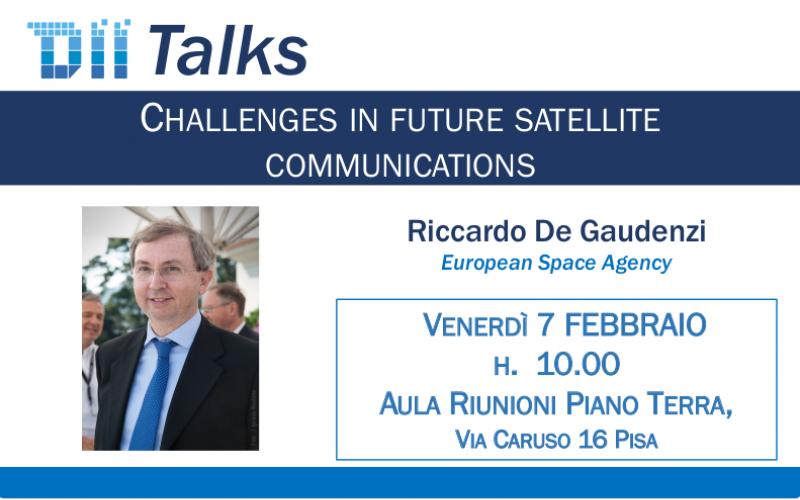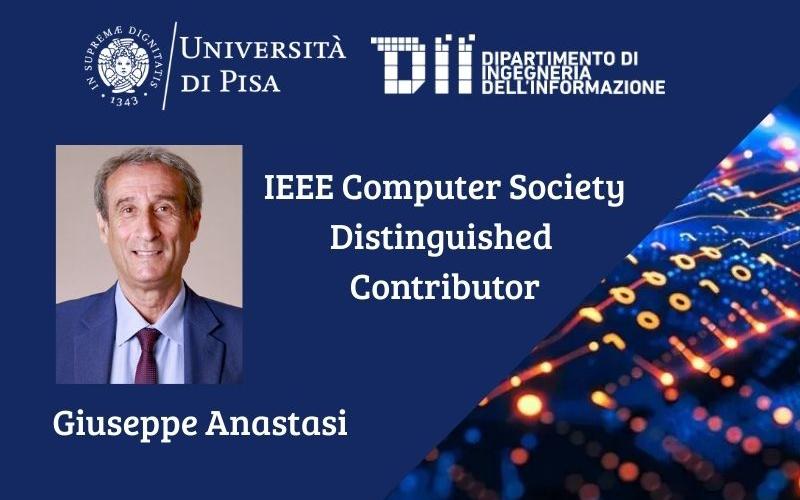La nomina a Distinguished Contributor (DC) premia i membri e gli affiliati della Computer Society che hanno apportato contributi tecnici significativi e continuativi alla IEEE Computer Society, alla...
Leggi tutto[DII Talks] Challenges in future Satellite Communications

Venerdì 7 febbraio
Ore 10.00
Sala Riunioni DII Piano Terra
Via Caruso 16
Abstract
Following a very short historical and commercial perspective on satellite telecom aspects, the key challenges ahead will be illustrated in terms of market needs and possible technical solutions being investigated and/or developed. In particular, the following aspects will be touched upon during the seminar:
- Which orbit: geostationary or not?
- Payload requirements and possible architectures
- The evolution of the ground segment for GEO and non GEO satellites
- The non GEO (mega) constellation challenges
- Is NOMA (non-orthogonal multiple access) worth?
- How to cope with co-channel interference: precoding, multi-user detection or none of them?
- NOMA for satellite IoT: NOMA at its best Will Massive MIMO work over satellite?
- The feeder link bottleneck: possible way forward and open issues
Bio
Riccardo De Gaudenzi received his MsC degree in electronic engineering from the University of Pisa, Italy in 1985 and the PhD from the Technical University of Delft, The Netherlands in 1999. From 1986 to 1988 he was with the European Space Agency (ESA) Ground Stations and Communications Engineering Department. In 1988, he joined ESAs Research and Technology Centre, The Netherlands where he has been covering several technical and managerial positions inside the Directorate of Technology, Engineering and Quality. He is currently the Head of the ESA’s Electrical Engineering Department. The department covers radiofrequency systems and payloads for navigation, telecommunication TT&C and Earth Observation, EEE components and microelectronics, data handling systems, power systems and energy sources, electromagnetic compatibility, space environments and their effects. The department is equipped with state-of-the-art laboratory facilities covering the different technical areas. Dr. De Gaudenzi has contributed to 8 space communication standards, authored or co-authored more than 70 full papers on peer reviewed journals, 3 books, and he holds 28 patents.



